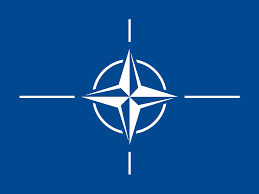The unveiling of Sikorsky’s S-70 UHawk marks a pivotal moment in military aviation, representing the fusion of one of the world’s most iconic and reliable airframes with the disruptive potential of advanced autonomous flight. This development, which effectively creates an unmanned Black Hawk, is not merely an incremental upgrade but a significant leap towards a future where complex aerial missions can be conducted without a pilot in the cockpit. As armed forces globally grapple with the challenges of operating in increasingly contested environments, the introduction of an optionally piloted or fully autonomous utility helicopter platform signals a fundamental shift in operational doctrine, logistics, and risk calculus. The UHawk is the culmination of years of dedicated research and development, promising to extend the operational life and relevance of the Black Hawk fleet for decades to come while introducing capabilities previously confined to the realm of science fiction.
From Utility Workhorse to Autonomous Pioneer
The historical significance of the UH-60 Black Hawk, known commercially as the S-70, cannot be overstated. Since its introduction in the late 1970s, it has served as the backbone of U.S. Army aviation and has been adopted by more than 30 nations, performing missions ranging from air assault and medical evacuation to cargo transport and special operations. Its reputation is built on ruggedness, reliability, and adaptability. This legacy provides the foundation for the UHawk. The transition to an unmanned platform is not an abrupt change but an evolutionary step, built upon years of investment in autonomous technology. Sikorsky, a Lockheed Martin company, has been at the forefront of this field with its MATRIX™ Technology, an autonomy system designed to give operators the flexibility to fly the aircraft with two, one, or zero crew members. This technology has been extensively tested through programs like the Defense Advanced Research Projects Agency’s (DARPA) Aircrew Labor In-cockpit Automation System (ALIAS), which has successfully demonstrated fully autonomous flights using a modified Black Hawk. The S-70 UHawk is the logical productization of these successful research initiatives, moving the concept from experimental demonstrator to a potential operational asset.
Redefining Air Assault and Logistics
The strategic and operational implications of an unmanned Black Hawk are profound. The ability to remove the pilot from the aircraft fundamentally alters how commanders can approach high-risk missions. The most immediate application lies in what are often termed the “dull, dirty, and dangerous” roles. Contested logistics—resupplying forward-deployed units under the threat of enemy fire—becomes significantly more viable when the risk to aircrew is eliminated. Similarly, missions such as intelligence, surveillance, and reconnaissance (ISR) or electronic warfare in heavily defended airspace can be undertaken with greater frequency and audacity. Furthermore, the concept of Manned-Unmanned Teaming (MUM-T) is greatly enhanced. A single manned command-and-control helicopter could lead a formation of several UHawks, multiplying the force’s effectiveness in air assault or reconnaissance operations. This not only increases combat mass but also reduces the cognitive load on pilots in the manned aircraft, allowing them to focus on mission command rather than the mechanics of flight. From a personnel perspective, an autonomous fleet could alleviate pressure on the military’s strained pilot training pipeline and reduce long-term operational costs.
Key Actors and the Future of Vertical Lift
The primary actors in this development are Sikorsky, as the original equipment manufacturer, and its parent company, Lockheed Martin, which has positioned itself as a leader in autonomy and systems integration. The principal customer and driving force behind this requirement is the U.S. Army, which operates the world’s largest fleet of Black Hawks. While the Army is pursuing next-generation platforms through its Future Vertical Lift (FVL) program, the reality is that thousands of Black Hawks will remain in service for decades. The UHawk offers a pragmatic and cost-effective path to modernize this vast legacy fleet, ensuring its continued relevance alongside newer FVL systems. This initiative also serves as a competitive maneuver in the global defense market. Competitors, such as Bell, are also heavily investing in autonomous vertical lift technologies. By offering a proven, world-class airframe equipped with a mature autonomy package, Sikorsky aims to secure a significant advantage. International partners who already operate Black Hawk fleets will be a key market, as the UHawk presents a clear upgrade path that leverages their existing investment in logistics, training, and infrastructure.
The Path to Integration and Widespread Adoption
Looking ahead, the S-70 UHawk represents the vanguard of a new era in military aviation, but its path to widespread adoption is not without challenges. Key hurdles include the certification of autonomous systems for operation in diverse and congested airspace, the development of robust cybersecurity protocols to prevent jamming or hijacking, and the establishment of new tactics, techniques, and procedures (TTPs) to maximize the platform’s utility. Military planners and ethicists will also need to address complex questions of command and control, particularly in scenarios involving the use of autonomous weapon systems. The most likely future scenario involves a hybrid fleet where manned, optionally piloted, and fully unmanned helicopters operate seamlessly together on a networked battlefield. The UHawk is not an end state but a critical enabler of this future vision. Its success will be measured not just by its technical performance, but by how effectively it is integrated into a broader joint-force operational concept. The S-70 UHawk is a powerful statement that the future of airpower is not just about designing new aircraft, but also about making existing ones smarter, more resilient, and more capable than ever before.


